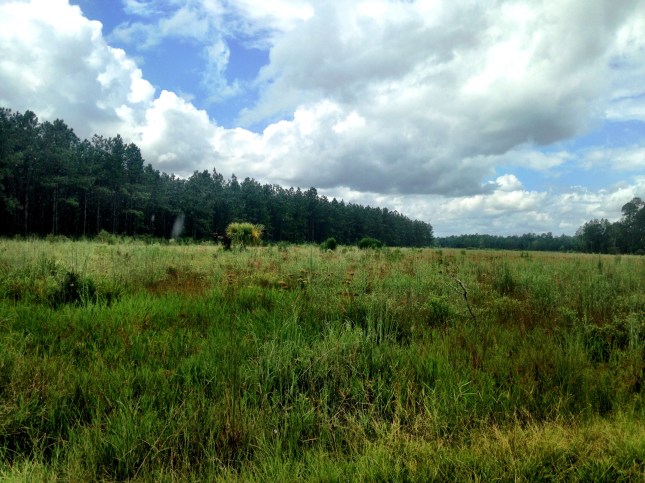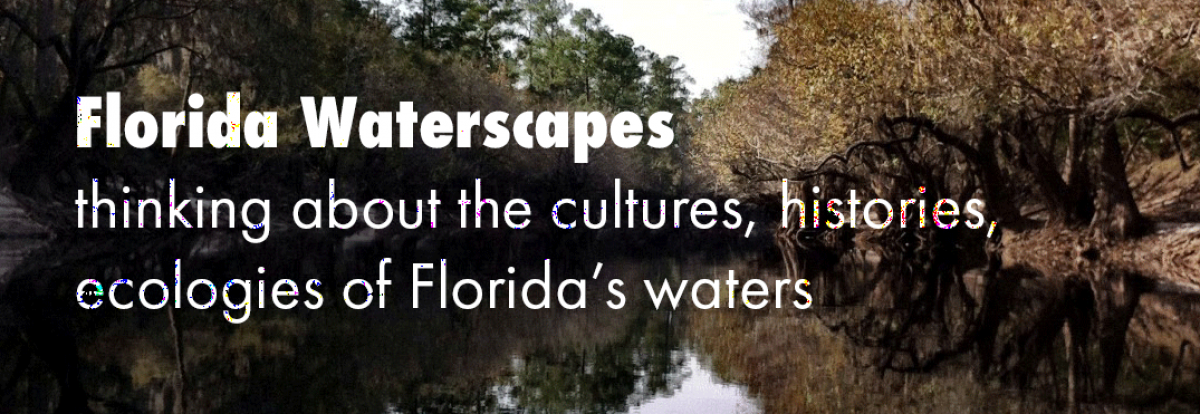
After a summer on the water, I was ready to brave Florida’s August heat for a hike through the Rice Creek Conservation Area. Just west of Palatka, this conservation area’s trails wander through cypress swamps and the headwaters of Rice Creek. Rice Creek flows into the St. Johns River and is listed on Putnam County’s Bartram Trail map. William Bartram, an 18th century Quaker explorer and botanist, traveled through Florida and wrote of his visit in his Travels.
The Bartram map includes biking, hiking, and paddling trails that incorporate these historic sites, perfect for a mix of history and outdoor adventure and most sites are marked with a QR code, linking viewers to relevant information. Last fall, I joined Paddle Florida‘s St. Johns History Paddle where we explored Bartram sites by water, and I wrote about this trip in In William Bartram’s Wake. Over the past year, I have been scouting sites around the St. Johns River for a Spring 2017 exhibit at the Matheson History Museum, “River of Dreams: The St. Johns River and Its Springs.”


The QR code at the parking lot marked this site as the terminus of Bartram’s trip up Rice Creek. The kiosk explained that this area was established as a rice and indigo plantation in the 1780s, hence the name Rice Creek. After a short walk along an exposed gravel road, we entered the shaded woods. The trail is narrow and crowded with palmettos, cypress trees, and other greenery, typical of the Florida scrub. Spiders had woven massive webs across the trail, and I ducked under these webs.
Walking through this landscape reminds how difficult land travel once was, especially Florida’s swampy landscape. Rivers like the St. Johns and smaller creeks were America’s roads and highways, and people and goods moved by river and sea.




We followed the white blazes which soon merged with the Florida Trail.This section of the Florida Trail is raised on a dike and reveals the remnants of the file and drainage system of the rice and indigo plantation. Here, we walked alongside small creeks and swampy areas that comprised the headwaters of Rice Creek. The water was low, but the muddy terrain and cypress knees hint at much higher water levels.




We walked just over a two-mile section of the area north of SR100, mostly around the headwaters. Rice Creek crosses under SR 100 and flows for approximately 7 miles to the St. Johns River. On January 30, 1766, William and John Bartram landed at the mouth of Rice Creek, then called Gray’s Creek, and rowed upstream.

“According to John Bartram’s journal, they found the creek to be about 60 feet across and 15 feet deep and meandering in a west by south direction. After progressing about seven miles, though the water was still 7 feet deep and more than sufficient for their shallow draft vessel, and more than 30 feet wide, they found the creek blocked with trees and snags and turned about to retrace their route back to the St. Johns. ” (http://bartram.putnam-fl.com/index.php/trail-history/sites-1-thru-10/site-3-nbsp-grays-creek-final)
The Bartram Trail Map depicts a route for paddlers, and I have yet to visit this section of river. Apparently, the paddle is wild and beautiful, but this chilling description in the Florida Times-Union gives me pause:
“As we entered the creek, the 50 people on board immediately became silent. There was no sound anywhere, no wildlife except for vultures in the trees along the banks. A deathly pall hung over the area. Even the trees looked sickly and stressed.
The poisons being released into the creek had turned it to a place of death. We learned the tragedy went deep below us to many organisms which, if they survived, would be unable to reproduce.” (http://jacksonville.com/opinion/letters-readers/2011-07-01/story/georgia-pacific-pollution-easily-observed-rice-creek#)
Rice Creek lies downstream of the Georgia-Pacific paper mill in Palatka, and the mill has been discharging waste into Rice Creek since 1947.Fortunately groups such as the St. Johns Riverkeeper have been working to mitigate damage to Rice Creek and the St Johns.
William Bartram encountered relatively clean, although inhabited, landscapes and waterscapes and wrote of their beauty. Following in his wake and imagining what he saw helps me see these places with fresh eyes and reminds me these land and waterscapes are my home and worth protecting.

